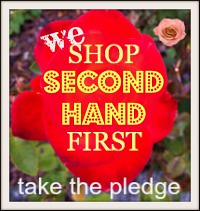Fashion for your coffee table: five great books for vintage lovers
Spring Fashion
Written by cjhammon in Books | Music | Art | Culture
Tags
No tags :(
Share it
Have you ever given a second thought to the intersection between film interiors and fashion? I hadn’t until this month, when I heard the president of the interior design company Scalamandré share that perspective in a lecture at the Indianapolis Museum of Art. I really hate to call it a lecture. That sounds too serious for what amounted to a delightful romp through old movies punctuated with fashion.
Example: Cary Grant with his charcoal hair and a stone gray suit against the backdrop of a dove gray apartment. Together, they make Eva St. Marie’s red floral dress pop like a thunderbolt in the 1959 movie, North by Northwest.
Steven Stolman’s visit to the IMA coincided with the publication of a new coffee table book, celebrating the history of Scalamandré, a company known for its luxury textiles. No, I didn’t buy a copy of Scalamandre:Haute Decor. I could have had one autographed that night, but here’s the thing: I’ve got a stack of borrowed coffee table books related to fashion that I’d love to buy even more. And on a writer’s pay, I can only afford so many coffee table books.
Let me pause here to admit one of my faults. You know how some people hoard their secret recipes? Well, with me, it’s the local library’s coffee table books. (And shoes. And purses. And coats. I think that about covers all the weak spots.)
I’ve been known to renew borrowed coffee table books from the library for months, the better to savor them. Don’t think less of me, because after all, that’s what coffee table books are for. It’s not my fault that IMCPL has a liberal renewal policy.
When I share a title, it means I risk losing the very books that are keeping me company to those of you who are in the same local library system. How can I pretend to own them if you ask to borrow them? I can’t.
Let this public confession––and the list that follows––serve as my atonement.
The Killer Detail: Defining Moments in Fashion, by Francois Armanet and Elisabeth Quin. One-page bios of famous people and their fashion statements. My favorite profiles were people you don’t usually associate with fashion. To wit: Jean Paul Sartre and his walking shoes. I like to think that I could have written this witty book, but like all good things, it’s usually harder than it looks.
The Mechanical Smile: Modernism and the First Fashion Shows in France and America, 1900-1929, by Caroline Evans. This tomb is a feast for vintage lovers—a towering intellectual history that consolidates all sorts of information, including business, international trade, consumption, women, work, fashion and cinema. This is a scholarly work, but it’s no less interesting, unless you’re not that into the evolution of fashion.
Diana Vreeland Memos: The Vogue Years, edited by Alexander Vreeland. A compilation of actual memos written by Diana Vreeland during her years as editor in chief of Vogue, edited by her grandson. Remarkable not only for the window on Vreeland’s life and thoughts, but also for the remembrance of workplace communication before we used other modes to give and receive feedback. This will be especially fun for younger readers who have never experienced mimeograph machines or typewritten work. An example of her funny directives: “I repeat again the importance of knee socks. The white knee sock and the white shoe will again look divine this spring…Don’t let us forget this…” These last five words are repeated again and again throughout the book. Think she may have been a little bit opinionated?
Jean Patou: A Fashionable Life, by Emmanuelle Polle. An exquisite biography of Jean Patou, Chanel’s chief rival during the 1920s and 1930s. It’s embellished with some of the most famous fashion photographs in history. “Making a woman look young and pretty is my aim,” Patou once said. I find it hard not to love a man who had such a lovely ambition. I also admire his loyalty to line and simplicity.
Dior Glamour: 1952-1962, by Mark Shaw. Beware of this book. It’s intoxicating. Mark Shaw’s photographs of the house of Dior from 1952 to 1962 capture one of my favorite periods in vintage fashion. When he took your picture, it was as if there wasn’t a camera in the room, according to one of his famous subjects, Lee Radziwill. Perhaps that explains why you want to step inside the lives—and the clothes—of the people Shaw photographed.
These are great books to add to your birthday or Christmas list. The pink vintage handbag on top of the stack of books (pictured above) came from Queen Bee Vintage, one of my favorite local stores. If you see something you like, better buy it immediately. I dropped by one day last week before they opened and spotted something I wanted displayed in the window. The next day, it was gone!
Help me solve a vintage handbag dilemma: I love them, but they are so small for all my gear! How do you work around that?








2 comments
May 1, 2014 at 2:30 pm
I have to check these out! That is, if you ever turn them back in 😉
May 5, 2014 at 8:12 pm
I can’t wait to get my hands on some of those books!
My dilemma for vintage handbags is carrying a large tote, then only the essentials in the vintage bag. I don’t usually need everything that is in my tote, but it is nice to have with me in the car. This works especially well with clutch purses, too, because they slip into the tote.
I love this pink purse!